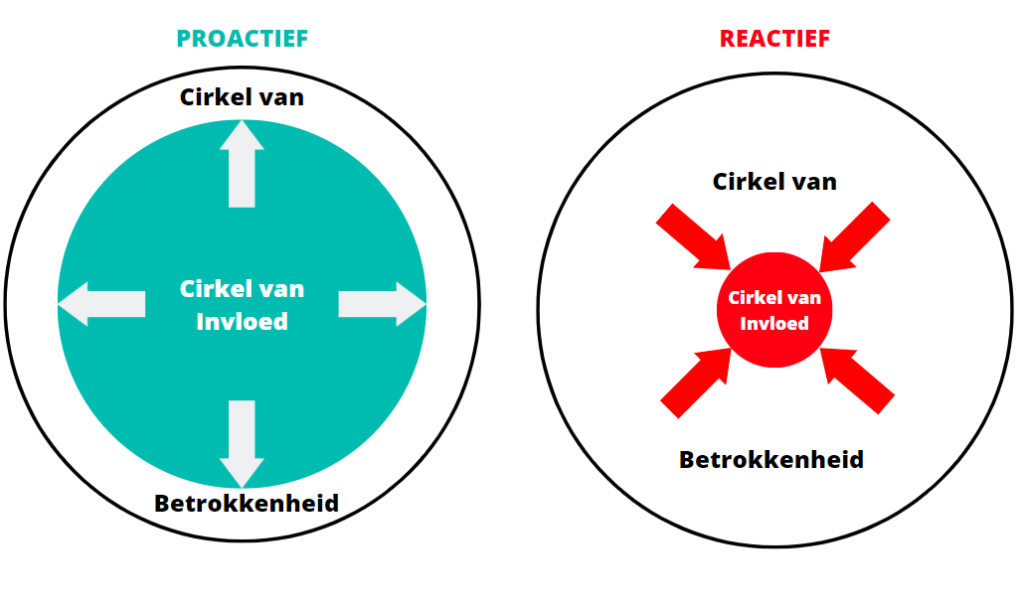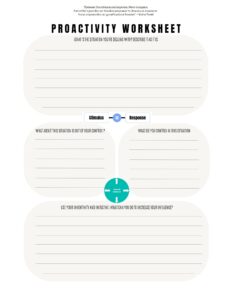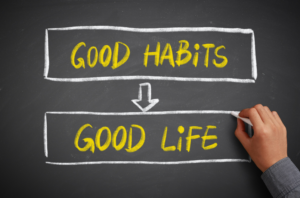Introduction
Welcome back! Do you recall our previous discussion about ‘pressing the pause button’? We explored how creating a brief interval between stimulus and response can help us regain control over our reactions. Now, we’re diving deeper into a related topic: the circle of concern and the circle of influence.
What are these circles? Don’t worry. We’re going to demystify these concepts and show how they can aid your growth as a parent and a family.
Understanding the Circles of Concern and Influence

So, what exactly are the circles of concern and influence? Stephen Covey introduced these concepts in his seminal book, “The 7 Habits of Highly Effective People.” Let’s break them down.
The circle of concern encompasses everything we encounter in life. All the things that worry us sit within this larger circle. Think of those thoughts that keep you awake at night, from your teenager’s behaviour to the rising cost of energy.
In contrast, the circle of influence is the realm where we can effect actual change. It’s smaller, but incredibly powerful! This encompasses the areas you genuinely control, such as your responses to your children’s behaviour or how you consume energy at home.
The Importance of Focusing on the Circle of Influence
As parents, the vast circle of concern can sometimes overwhelm us. But here’s the good news: by focusing on our circle of influence, we can make a difference. The more we zero in on the areas we can impact, the larger this circle grows. It fosters a sense of control over our lives.
Beware, though! The more we dwell on issues beyond our circle of influence, the smaller it becomes. Excessive complaining about circumstances or others can lead to feelings of helplessness. We begin to lose grip over our lives. Sure, grumbling about high energy prices and government inaction might seem justified, but be mindful of over-focusing on such areas.
Grasping these circles and their distinction is crucial in shaping our parental identity. It empowers us to make mindful decisions about where we expend our energy. It teaches us to be proactive rather than reactive, to tackle problems instead of merely worrying about them.
Expanding Your Circle of Influence

Let’s delve into the magic of expanding your circle of influence. How is it achieved?
Start by focusing on what you can alter. You can’t control your children’s behaviour, but you can manage your reactions to it. For instance, you can’t halt rising energy prices, but you can implement energy-saving measures at home. It sounds straightforward, yet it can make an immense difference!
However, beware. We can inadvertently shrink our circle of influence. Negativity, for example, diminishes our circle. If we spend too much time complaining or fretting about unchangeable circumstances, our circle contracts.
So remember: concentrate on what you can change, stay proactive, and strive to maintain positivity. By doing so, you can enlarge your circle of influence and become an even more fantastic parent!
Indirect Influence? Employ Your Double I: Initiative and Ingenuity

You have your circle of influence, your circle of concern, but there’s another secret ingredient in this mix: the double I of Initiative and Ingenuity!
What about those aspects slightly outside your direct circle of influence but you still want to address? The starting point is always the thing you have the most control over: your own behaviour. From there, we can proceed with initiative and ingenuity.
Initiative implies taking action, not waiting for someone else to make a move, but leading the charge yourself. Ingenuity entails being creative, finding new ways to solve problems.
Let’s revisit the example of high energy prices: By switching to energy-efficient appliances, limiting heating use, or utilizing renewable energy sources like solar panels, you exert influence over something outside your direct circle of influence. These are all things within your control that can help reduce your energy costs in the long run.
So there you have it. The double I of Initiative and Ingenuity can help you expand your circle of influence.
The Serenity Prayer

Let’s take a detour to discuss the Serenity Prayer. Yes, a prayer. Regardless of your religious beliefs, these words can profoundly affect your perspective.
Originally penned by American theologian Reinhold Niebuhr in the 1930s, the Serenity Prayer, made famous by AA (Alcoholics Anonymous), goes: “God, grant me the serenity to accept the things I cannot change, the courage to change the things I can, and the wisdom to know the difference.”
Accepting What You Can’t Change
Do you see the parallel with the circles of concern and influence? The prayer’s first segment speaks of acceptance, which corresponds to your circle of concern. Life isn’t always a bed of roses. A rich and meaningful life will inevitably have its share of hardship. We will face grief, loss, adversity. We must accept this. It’s life. As much as we’d like to change this, we can’t. The Stoics embedded this in their philosophy: amor fati and memento mori. We’ll discuss this more in a future blog post.
Having the Courage to Change What You Can
The second segment speaks of courage, which aligns with your circle of influence. It takes bravery not to complain, to consider what you can personally undertake, and to actually get to work. I often found that I only took initiative and became inventive when I was backed into a corner. I lacked the courage before, and then suddenly, it was necessary. Looking back, I wondered why I didn’t act sooner.
Having the Wisdom to Know the Difference
The last part, having the wisdom to know the difference, is the secret to balancing them. We often underestimate what we can achieve. Focus and beliefs play a key role in this. The more you focus on your circle of influence – on your own behavior – the wiser you will become.
Tips for Using the Circles of Influence and Concern
Now that you have a solid understanding of these circles and the Serenity Prayer, let’s share some practical tips on how you can apply these beautiful concepts in your daily life as a parent.
- Start the day by reflecting on your circles. What can you influence today? What must you merely accept? It helps to focus your attention on things you can genuinely change.
- If you feel overwhelmed, pause and ask yourself, “Is this in my circle of influence or in my circle of concern?” This question can assist you in directing your energy towards what truly matters.
- Encourage your children to do the same. It’s a fantastic way to teach them about proactivity and acceptance.
- And remember the double I: Initiative and Ingenuity. Use them to expand your circle of influence and to have an even more positive impact on your family and the world beyond.
- Evaluate and learn: Did something not go as planned? Even then, this can be a positive experience for you. Look for lessons you can learn.

You can utilize the proactivity worksheet for this. Click here to download.
So, let’s carry the wisdom of the Serenity Prayer with us and let’s grow together as a family!
Conclusion and Summary
Wow, we’ve discovered quite a lot today, haven’t we? We’ve dissected our circles of concern and influence and understood their importance for our parental identity. Next, we looked at how we can expand our circle of influence and avoid pitfalls that can inadvertently shrink it. We even discovered the power of the Serenity Prayer and how we can apply it to our daily challenges. And let’s not forget our double I, initiative and ingenuity!
Looking Forward to the Next Blog Post: Begin with the End in Mind
So, what’s the next step on our journey to grow as a family? The next post will be about “Begin with the End in Mind”. We’ll discuss setting our goals and how we can give direction to our lives. Stay tuned!
Want to Read or Watch More?
• Stephen Covey’s Books: Covey explores essential habits for personal and professional effectiveness, including being proactive, beginning with the end in mind, and first things first*.
• The Enchiridion by Epictetus: This ancient Stoic philosopher discusses the dichotomy of control and emphasizes the importance of focusing on what we can control in life*.
*Read disclamer at the end of this page.








